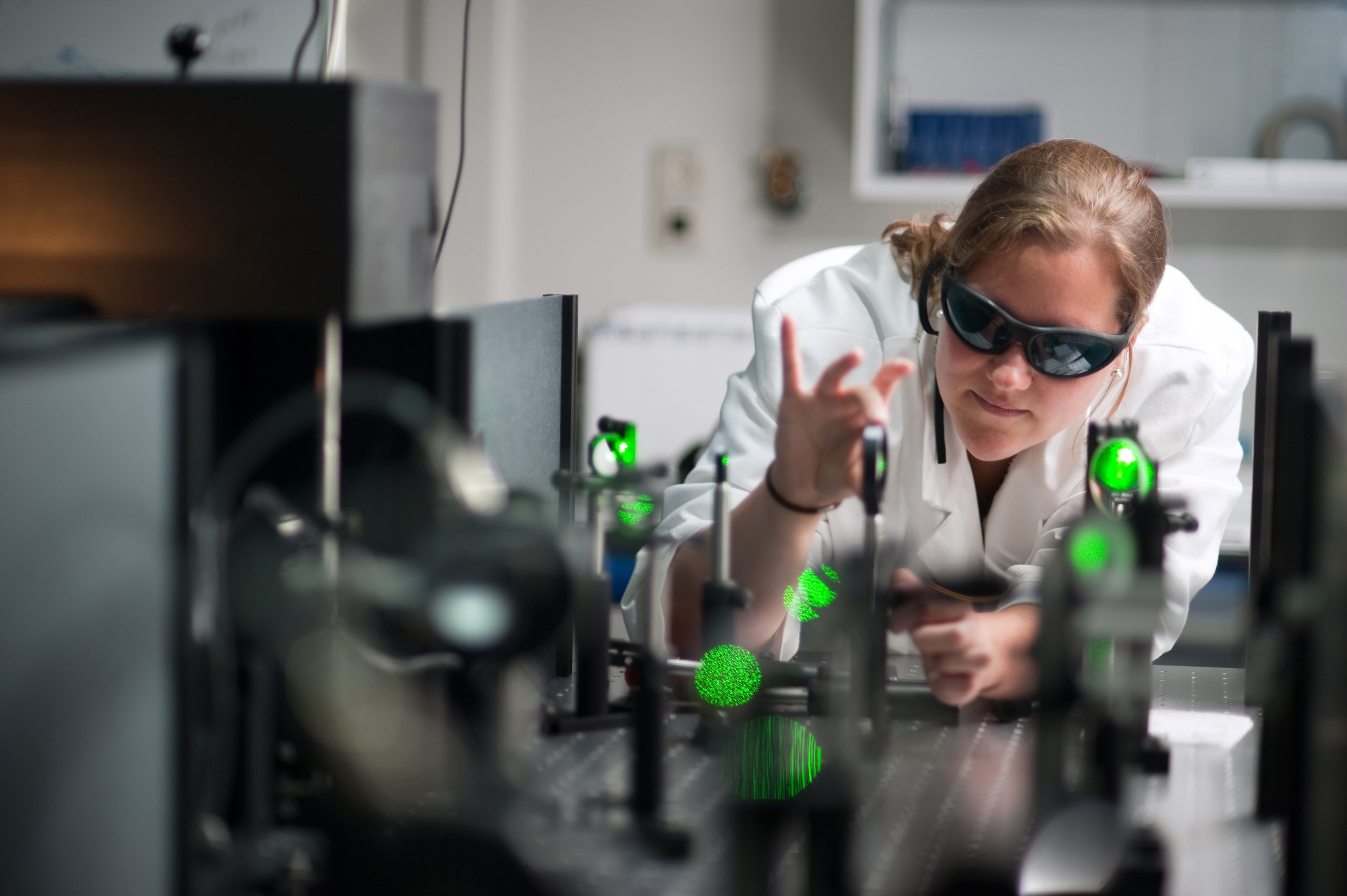If you need to negotiate contracts, set up a company or protect your IP, you’d better call in the help of valorisation expert Jetty van Ginkel. This former TU Delft researcher just won the 2017 NWO Physics Valorisation Chapter Prize.
Dishonest companies, critical questions from patent lawyers and conservative medical doctors who don’t see any added value in your technology. It wasn’t easy for Dr Jetty van Ginkel to market the technique for protein analysis which she had developed during her PhD research. As a matter of fact, she did not succeed. Still, she won the 2017 NWO Physics Valorisation Chapter Prize for her PhD thesis entitled ‘Peptide Fingerprinting Using Single-Molecule Fluorescence ’, which she defended last year at the Faculty of Applied Sciences.
The jury praised her for writing down so clearly how she discovered the potential impact of her findings for the medical sector, applied for a patent, explored business development strategies and looked for business partners.
Can you describe your invention?
“I developed a method to identify proteins, a single-molecule protein-sequencing technique. Nowadays it is possible to sequence the complete DNA of people using a minuscule amount of biological tissue. It is much more difficult to analyze all the proteins. But with our new method, it should be possible – the technique still needs a lot of fine-tuning – to map all of the proteins in a single cell. This can be very interesting for medical research. The expression profile of proteins is rich in information; it can be used, for example, in diagnosing diseases. Our technique may be especially useful in cases where only tiny amounts of tissue can be taken from a patient, for instance, spinal fluid or a brain biopsy. Our approach is new. We used enzymes from bacteria that stretch out proteins, thus allowing us to read all the amino acids, the building blocks of proteins.”
You won a prize. But there was also a downside. Despite all your efforts, your invention did not leave the laboratory. What went wrong?
“Foremost, we misjudged the time frame, the time we would need to market the technique. After filing a patent, you basically have 30 months to get your act together, to arrange agreements with investors and other partners from industry. Because after those two and a half years you get to a point where you have to specify the regions of the world where you want your patent to be operative, say Europe, North America, and Asia. Having a patent then becomes much more costly. The university doesn’t want to pay for it unless serious business negotiations are underway. After 30 months some companies showed interest, but this didn’t result in a deal. Two and a half years sounds like a long time, but it is not.”
How do you explain the reluctance of investors?
“Mapping the complete profile of proteins in cells is interesting from a fundamental point of view. But there is not enough medical knowledge yet on how to interpret the findings. I think we will go through a similar process to the one the science of DNA analysis went through. Innovation in DNA analysis techniques was technology-driven. Once complete DNA sequences became available, the genomics field got a boost. Our situation is the same. Doctors can in many cases not yet directly use the protein profiles we can deliver. They don’t know what they mean. That will change over time. But for now, I think our technology may have come a bit too early.”
It must be frustrating to put so much effort into marketing your work only to see it fail?
“It is a struggle. You are playing games with examiners from the patent bureaus who bombard you with critical questions about your finding to make sure it really is something new and inventive. You get to plow through their tough judicial documents. When discussing your ideas with companies, you have to be careful not to let them in on too many details, because they might steal your invention. But you still need to arouse their curiosity. And you have to be careful not to be ripped off by large companies that want to take over all the intellectual property rights for a bargain. It is funny though; at the laboratory, I was the only one enjoying the whole process. That is why I now work at the Technology Transfer Office of Erasmus Medical Centre. There, I screen new findings, help protect IP, negotiate contracts with interested market parties and help researchers set up new companies. I protect people from making the same mistakes I did.”
Do you have a question or comment about this article?
tomas.vandijk@tudelft.nl


Comments are closed.